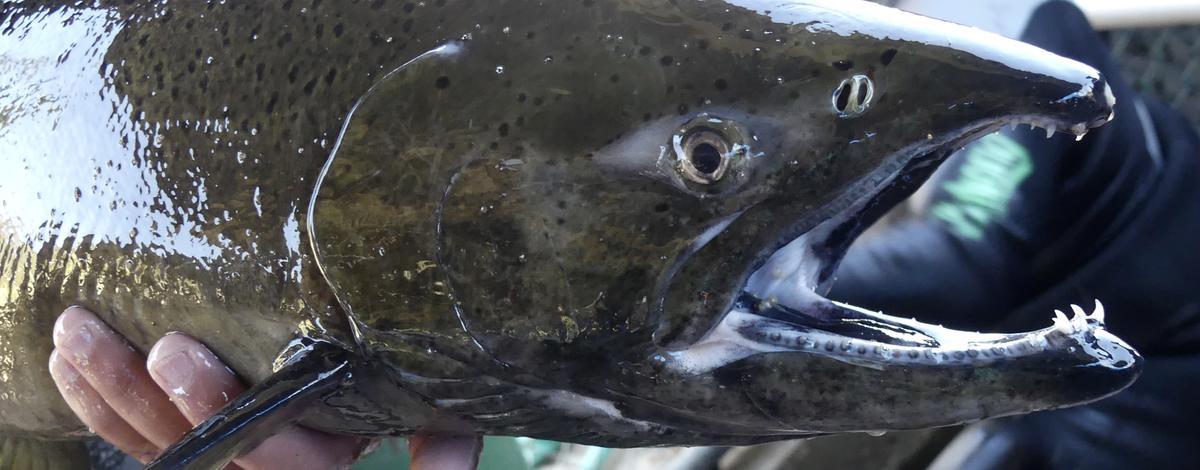For Chinook at the McCall Fish Hatchery, their lives start (and end) at the South Fork of the Salmon River with the adults returning from the Pacific and Fish and Game crews spawning the fish to produce the next generation of Idaho salmon.
It's a laborious process as each fish is hand checked to see its ready to spawn, and then put through a process that is both basic – sperm meets egg – and complicated because fish are tested, DNA catalogued, cross referenced with its ancestors, checked for disease, and then fertilized eggs from each female are numbered, catalogued and transported to the McCall Fish Hatchery.
Spawning sessions began in August and are repeated twice a week through late summer until all the adults are spawned. They will produce about a million young fish that will be hatched and raised at the McCall hatchery before eventually being released to migrate to the ocean.
Here's what the process looks like:
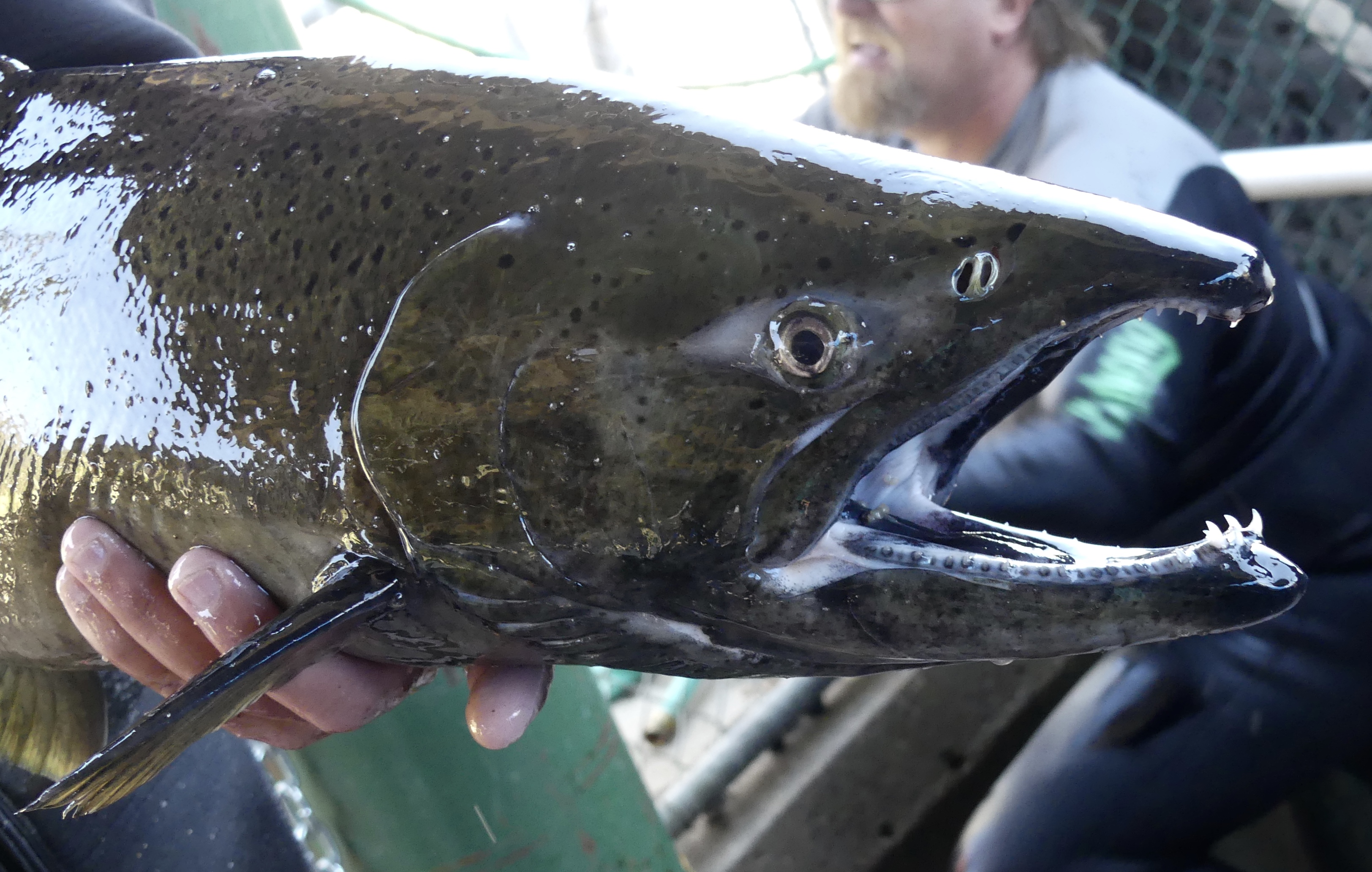
An adult Chinook salmon is ready to spawn. It's a male that has undergone the metamorphosis into spawning mode with its hooked jaw, known as "kype" and sharp teeth for determining dominance and male spawning frequency.
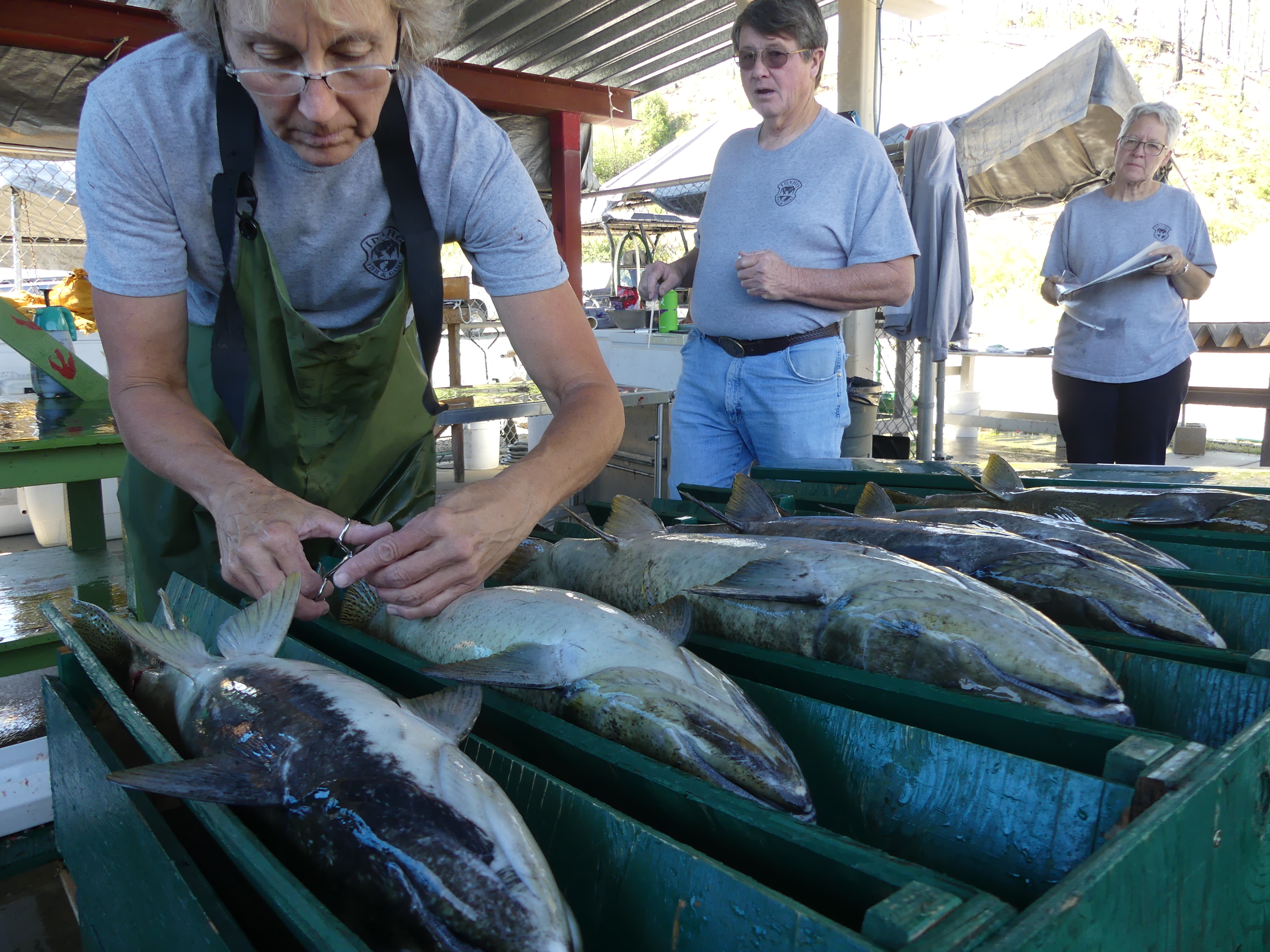
These are females that were ripe to have eggs removed. They were euthanized, then a genetic sample was taken from each female, which allows biologists to check the genetics of each fish and also track its eggs until they hatch.
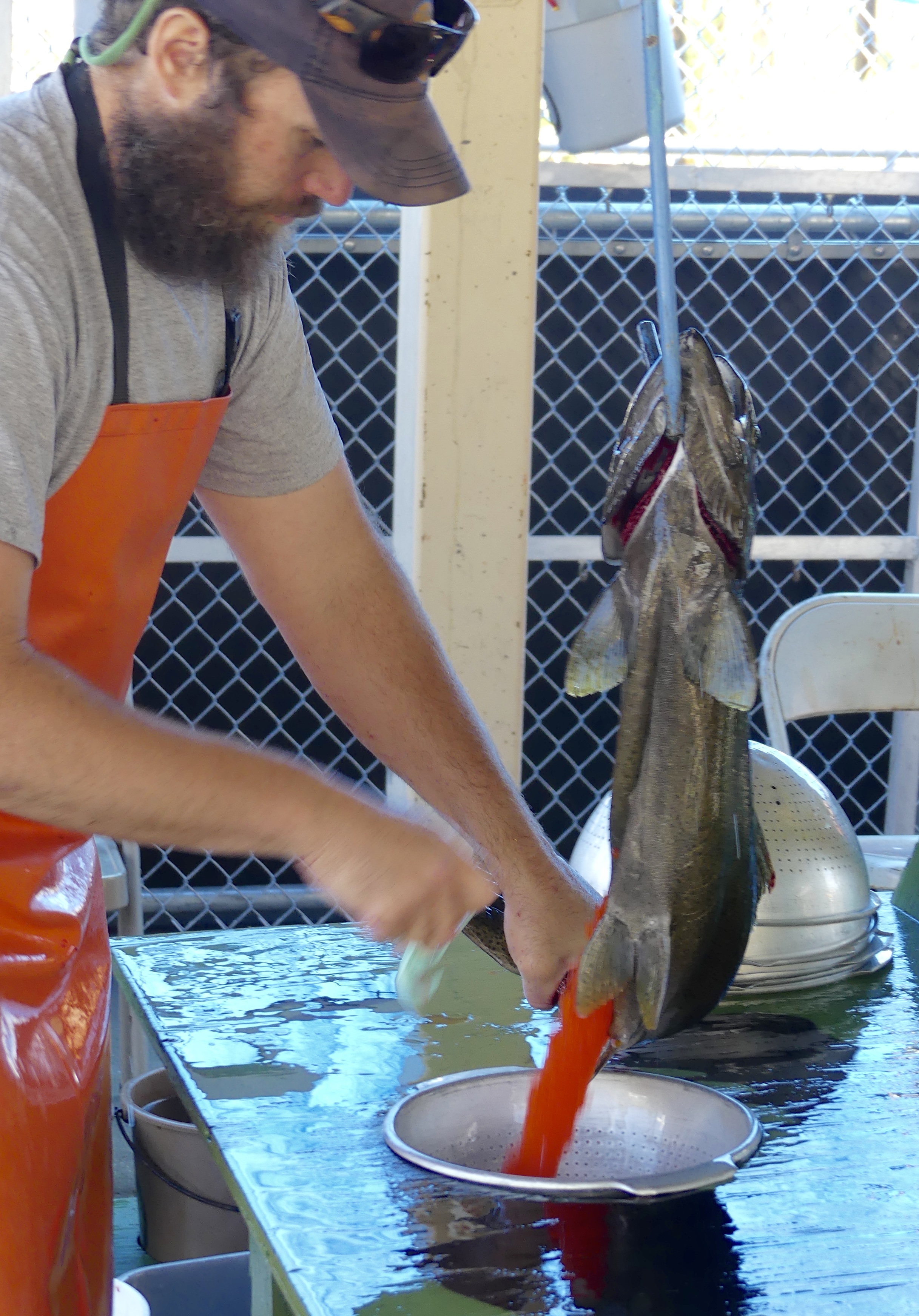
Eggs are stripped from a ripe female. Each female produces about 2,500 eggs, but the largest fish can produce up to 5,000 eggs.

Eggs are fertilized, typically one male is to used to fertilize each female's eggs.
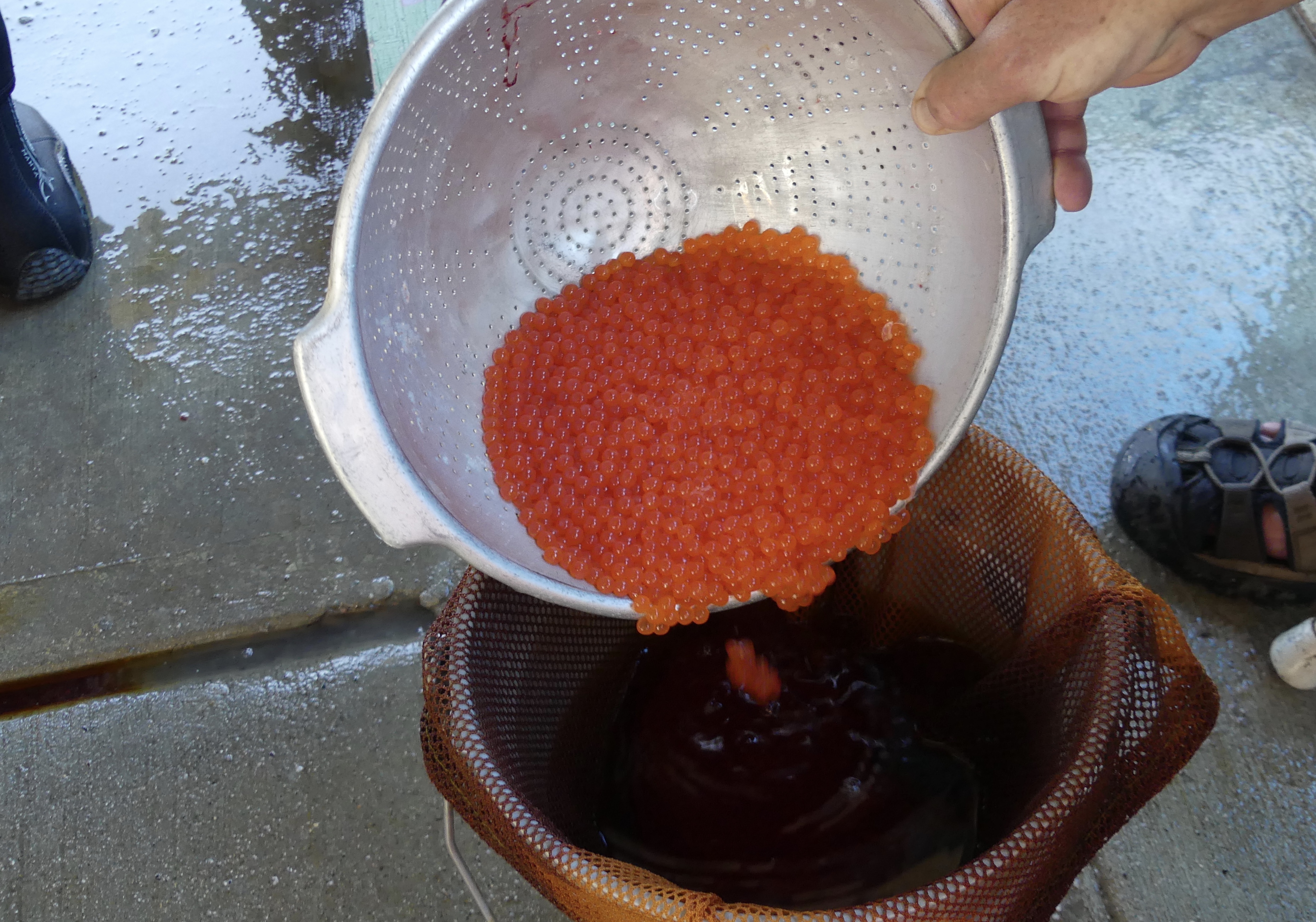
Fertilized eggs from each female are kept segregated from other batches and inventoried so biologists know which parents they came from, and each batch remains segregated until they are hatched.
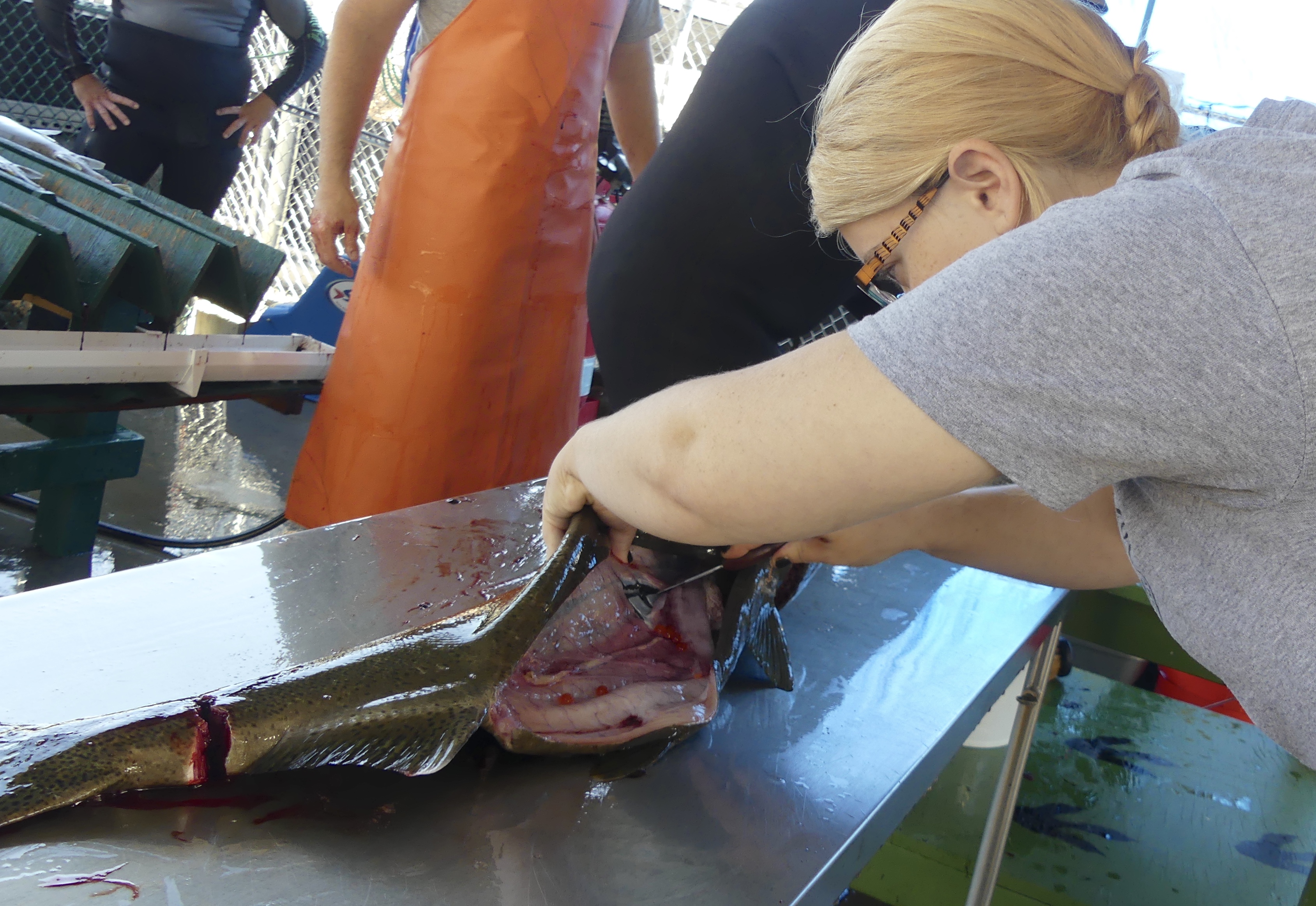
Biologists test each spawned fish for disease. If any hereditary, bacterial, or viral disease is detected, those eggs can be removed from the hatchery. Crews incorporate stringent bio-security and work diligently to avoid contaminating any eggs that could introduce or spread disease in the hatchery.
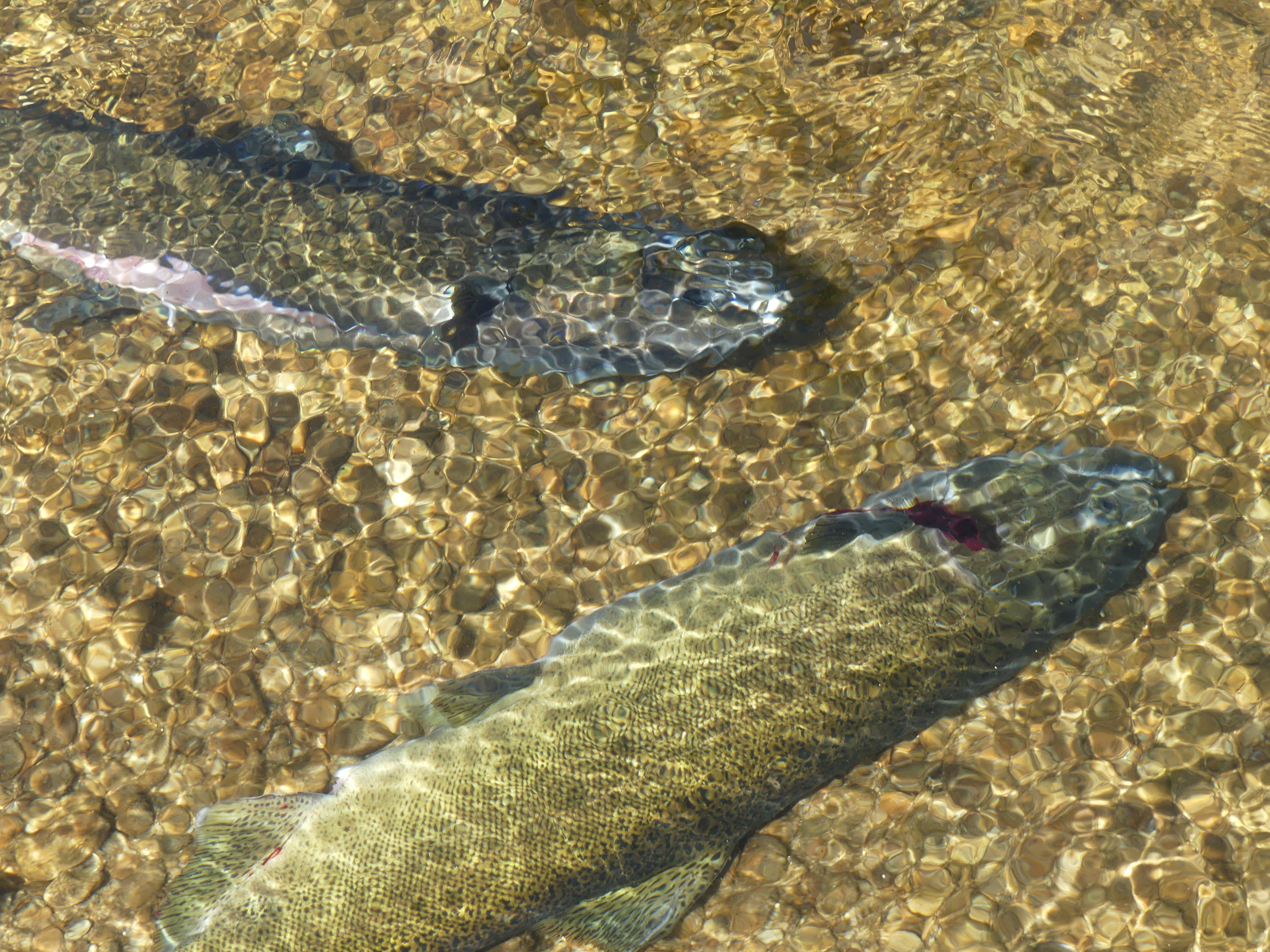
Spawned-out carcasses are returned to the river, where they become food for eagles, bears and other wildlife. Carcasses also decompose and provide nutrients for plants, insects and other organisms that feed young salmon living in the river until they're old enough to migrate to the ocean.

